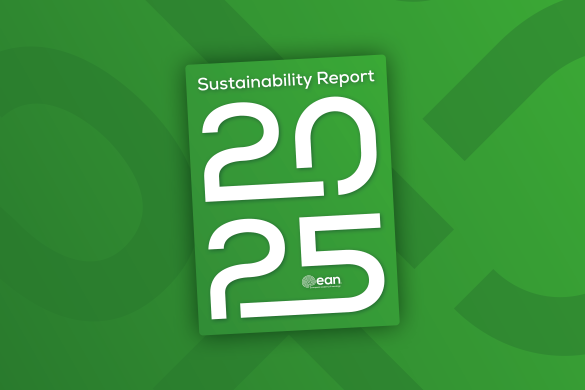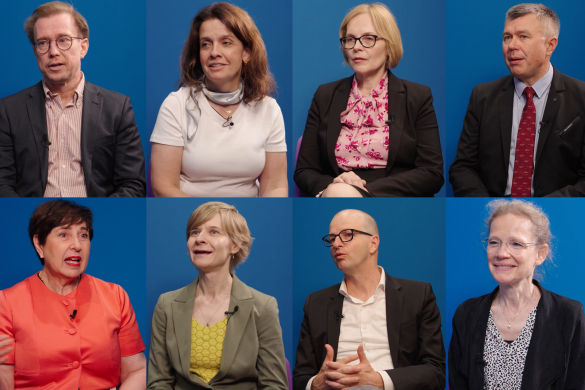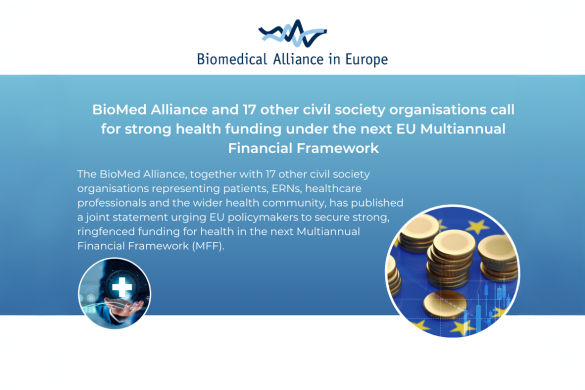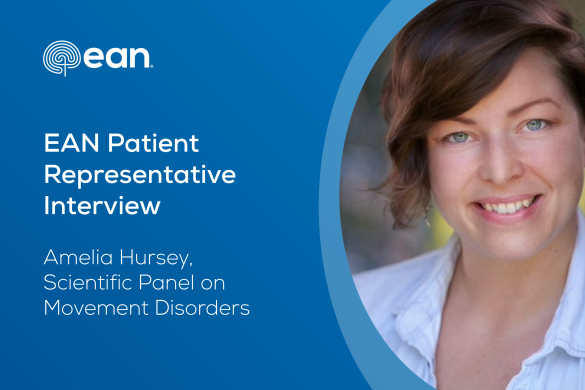Cross-sectional case-control studies (Blue)
Read on for our pick of COVID-19-related cross-sectional case control studies from the scientific press for November 2022:
*Note – starting in December 2022 our monthly COVID-19 Breaking News articles will be published under the new name ‘COVID-19 Research Roundup’*
- Post-acute sequelae of covid-19 six to 12 months after infection: population based study
- Association between the risk of seizure and COVID-19 vaccinations: a self-controlled case series study
- Association of COVID-19 with New-Onset Alzheimer’s Disease
Post-acute sequelae of covid-19 six to 12 months after infection: population based study
The objective of this population based, cross sectional study was to describe symptoms and symptom clusters of post-covid syndrome six to 12 months after acute infection, describe risk factors, and examine the association of symptom clusters with general health and working capacity. Adults aged 18-65 years with confirmed SARS-CoV-2 infection between October 2020 and March 2021 notified to health authorities in four geographically defined regions in southern Germany were included. 50 457 patients were invited to participate in the study, of whom 12 053 (24%) responded and 11 710 (58.8% (n=6881) female; mean age 44.1 years; 3.6% (412/11 602) previously admitted with covid-19; mean follow-up time 8.5 months) could be included in the analyses. Symptom frequencies (six to 12 months after versus before acute infection), symptom severity and clustering, risk factors, and associations with general health recovery and working capacity were the main outcomes and measures. The symptom clusters fatigue (37.2% (4213/11 312), 95% confidence interval 36.4% to 38.1%) and neurocognitive impairment (31.3% (3561/11 361), 30.5% to 32.2%) contributed most to reduced health recovery and working capacity, but chest symptoms, anxiety/depression, headache/dizziness, and pain syndromes were also prevalent and relevant for working capacity, with some differences according to sex and age. Considering new symptoms with at least moderate impairment of daily life and ≤80% recovered general health or working capacity, the overall estimate for post-covid syndrome was 28.5% (3289/11 536, 27.7% to 29.3%) among participants or at least 6.5% (3289/50 457) in the infected adult population (assuming that all non-responders had completely recovered). The true value is likely to be between these estimates. The authors concluded that despite the limitation of a low response rate and possible selection and recall biases, this study suggests a considerable burden of self-reported post-acute symptom clusters and possible sequelae, notably fatigue and neurocognitive impairment, six to 12 months after acute SARS-CoV-2 infection, even among young and middle aged adults after mild infection, with a substantial impact on general health and working capacity.
Peter RS, Nieters A, Kräusslich HG, Brockmann SO, Göpel S, Kindle G, Merle U, Steinacker JM, Rothenbacher D, Kern WV; EPILOC Phase 1 Study Group. Post-acute sequelae of covid-19 six to 12 months after infection: population based study. BMJ. 2022 Oct 13;379:e071050. doi: 10.1136/bmj-2022-071050.
Association between the risk of seizure and COVID-19 vaccinations: a self-controlled case series study
The risk of seizure following BNT162b2 and CoronaVac vaccinations has been sparsely investigated. This study aimed to evaluate this association. Patients who had their first seizure-related hospitalization between February 23, 2021 and January 31, 2022 were identified in Hong Kong. All seizure episodes happening on the day of vaccination (day 0) were excluded since clinicians validated that most of the cases on day 0 were syncopal episodes. Within-individual comparison using a modified self-controlled case series analysis was applied to estimate the incidence rate ratio (IRR) with 95% confidence intervals (CI) of seizure using conditional Poisson regression. The authors identified 1656 individuals who had their first seizure-related hospitalization (BNT162b2: 426; CoronaVac: 263; unvaccinated: 967) within the observation period. The incidence of seizure was 1.04 (95% CI: 0.80-1.33) and 1.11 (95% CI: 0.80-1.50) per 100,000 doses of BNT162b2 and CoronaVac administered respectively. 16 and 17 individuals received second dose after having first seizure within 28 days after first dose of BNT162b2 and CoronaVac vaccinations, respectively. None had recurrent seizures after the second dose. There was no increased risk during day 1-6 after the first (BNT162b2: IRR=1.39, 95% CI=0.75-2.58; CoronaVac: IRR=1.19, 95% CI=0.50-2.83) and second doses (BNT162b2: IRR=1.36, 95% CI 0.72-2.57; CoronaVac: IRR=0.71, 95% CI=0.22-2.30) of vaccinations. During 7-13, 14-20- and 21-27-days post-vaccination, no association was observed for both vaccines. The authors concluded underlying that the findings of this study demonstrated no increased risk of seizure following BNT162b2 and CoronaVac vaccinations. Future studies will be warranted to evaluate the risk of seizure following COVID-19 vaccinations in different populations with subsequent doses to ensure the generalizability.
Wan EYF, Ng VWS, Chang RS, Yan VKC, Chui CSL, Wong CKH, Li X, Lai FTT, Chan EWY, Hung IFN, Lau KK, Wong ICK. Association between the risk of seizure and COVID-19 vaccinations: a self-controlled case series study. Epilepsia. 2022 Oct 13. doi: 10.1111/epi.17436.
Association of COVID-19 with New-Onset Alzheimer’s Disease
The authors analyzed electronic health records of 6,245,282 older adults (age ≥65 years) who had medical encounters between February 2020 and May 2021 and no prior diagnosis of Alzheimer’s disease. The TriNetX Analytics Platform was used, which represents US population from 50 states covering diverse geographic, age, race/ethnicity, income, and insurance groups. 410,748 had contracted COVID-19 in that period (COVID-19 cohort) whilst 5,834,534 had not (non-COVID-19 cohort). They propensity-score matched for demographics, adverse socioeconomical determinants of health as problems with education, occupational exposure, physical, social and psychosocial environment, and known risk factors for Alzheimer’s disease the COVID-19 cohort with 410,748 individuals within the non-COVID-19 cohort. They also calculated their probability of receiving a diagnosis of Alzheimer’s disease within 360 days from the COVID-19 diagnosis compared to the non-COVID-19 group. Overall, the COVID-19 cohort had an increased risk of being diagnosed with Alzheimer’s disease compared to matched non-COVID-19 cohort (HR: 1.69, 95% CI: 1.53–1.72). When stratified by age (65–74, 75–84, ≥85 years old) and gender, people ≥85 years old and women had a higher probability of being diagnosed with Alzheimer’s disease (≥85 years old; HR: 1.89, 95% CI: 1.73–2.07, women; HR: 1.82, 95% CI: 1.69–1.97).
Wang L, Davis PB, Volkow ND, Berger NA, Kaelber DC, Xu R. Association of COVID-19 with New-Onset Alzheimer’s Disease. Journal of Alzheimer’s Disease. 2022 Sept 13. Doi: 10.3233/JAD-220717














